Meet Binh.
Vietnamese war veteran, DMZ tour guide, motorbike taxi driver.
We hadn’t planned on touring any of the Vietnam War sites prior to our arrival in Vietnam. Frankly, turning war into a tourist attraction is a bit uncomfortable for us, especially in a country like Vietnam where the ramifications are still affecting many people’s everyday lives. However, we quickly realized that despite being Americans, our knowledge of the war was (and is) quite limited. When we discovered we could support local veterans and benefit from their first-hand knowledge on the tour, there were no longer any questions in our mind. We were going on a DMZ tour. It proved to be a fantastic decision.
I liked Binh from the moment he showed up at our hotel, leopard-print sunglasses and beaming smile in tow. I was surprised when he began conversing with us quite clearly in English. Binh learned all his language skills from serving alongside Americans on the South Vietnamese side of the war, though if I had to guess it I would have thought he had studied English his whole life long.
Introductions finished and motorbikes rented, we wasted no time in getting started on our private DMZ excursion.
DMZ stands for Demilitarized Zone; it was used to separate North and South Vietnam after the First Indochina War. During the Vietnam War, the area around the DMZ saw some of the worst fighting and relentless bombings—an issue that continues to affect the lives of villagers living around the DMZ and the area called Quang Tri.
We knew that Vietnam still had problems with unexploded ordinance and landmines; however, we were naive to the extent of the problem until we visited the Mine Action Visitor Center. The first stop on our tour, the Mine Action Visitor Center is a small venue that seeks to educate visitors on explosive remnants from the war, and their tragic legacy nearly four decades later. A tour through the center will reveal maps showing the bombing that occurred, documents and photographs from the war, and exhibits of the various ordinances used.
It’s an overwhelming experience. Consider this: 15 million tons of bombs were dropped in Vietnam during the war, with a large majority of that concentrated on the area around the Quang Tri province. Of that 15 million, it’s estimated that 10% didn’t go off. And in Quang Tri, 83% of the total land area remains contaminated. It’s no wonder that locals are still experiencing the ramifications from unexploded ordinance when you consider numbers like that. In fact, reports of unexploded ordinance occur on a regular basis. Our guide told us that just two weeks ago, a bomb that had been unknowingly hiding beneath a house arbitrarily went off, destroying half of the two-story home. Luckily, no one was hurt in the incident, but this is not always the case. There have been over 100,000 deaths and injuries as a result of explosive remnants of war, many of them children.
Luckily, there are steps that can be taken to reduce the ramifications of unexploded ordinance. In conjunction to removing unexploded bombs and neutralizing the land, the Mine Action Visitor Center is also educating local Vietnamese, especially children, about the dangers of explosive remnants and the safety steps to take should they encounter some themselves.
We could have spent much more time at the Mine Action Visitor Center learning about the support given to survivors of explosive remnants and the ongoing attempts to deal with the tragic legacy. But this was only an introduction to the tour, and there were many more stops waiting.
Our tour continued with a stop at a military cemetery. Rows and rows of graves solemnly hold the bodies of primarily North Vietnamese soldiers; the large majority of these graves are only marked ‘martyr’ as the bodies were found with no identification. Binh told us it’s not uncommon for the families of lost soldiers to hire two fortunetellers to come to the cemetery on separate occasions. If both fortunetellers choose the same grave, it is decided that must be where their deceased loved one lies.
Following the cemetery was a stop at the river that served to divide Vietnam. Binh brought the scene to life, telling stories of the rival between the two guard stations on either side of the border: If one side raised a flag, the other side would raise their own larger flag higher. If one side blared their propaganda from speakers, the other side would get two speakers and shout louder. If the North wanted to talk politics, the South would respond with Rock n’ Roll. After learning about so much devastation and turmoil, we couldn’t help but smile at Binh’s light-hearted accounts. We wanted to question him more about his personal experiences during the war, but that would have to wait. First we had to take our tour underground at the Vinh Moc Tunnels.
The Vinh Moc Tunnels are the reason why many tourists sign up for a DMZ tour in the first place, and for good reason. The town of Vinh Moc was a community of villagers that received relentless bombing from the Americans (who had aims to drive them away and stop their work providing supplies to the North army). But with nowhere to go, the resourceful community decided to take their community below the soil instead. An underground city was built, complete with a hospital, school, family rooms, water well, and kitchen. It’s difficult to comprehend how this town was able to construct the three-tier tunnel system, reaching down 30 meters into the ground. It’s even more remarkable to comprehend what life must have been like there. The rooms were small, a mere 20-square feet for an entire family, and there was only one bathroom to service the 600 people that would eventually call the tunnels home. While villagers could leave the tunnels for fresh air, lack of sunlight was a definite problem. Amazingly, seventeen children were even born in the tunnels!
While our DMZ stops were the perfect way to learn about the impact that the war had and continues to have on local populations, the highlight of the experience was getting to know Binh. He didn’t speak much about his personal experience in the war and didn’t feel obliged to share his opinions on the current political situation—both of which are completely understandable. However, he did speak about other things. Binh told us about being almost 18, forcefully recruited to join the South Vietnamese army. He told us of practicing his English with the Americans, some of who could speak quite good Vietnamese. Binh told us about going to prison for three months for serving on the wrong side of the war, though he had not voluntarily chosen to fight in the first place. However, Binh felt lucky for the short sentence, and he heartily laughed when telling about the community service and Communist ideology classes he had to attend. Although Binh is obviously an extremely smart man, he spent a large portion of his life working in a cement factory for two dollars a month. Luckily he makes a bit more today as a tour guide and taxi driver, and his three children are receiving an education and working at good jobs. We enjoyed speaking to Binh so much that when we finished our tour, we all decided to get an early dinner and a few beers before heading on our own ways. When we did eventually say goodbye, Binh gave us great big, genuine hugs, as though we had known each other all our lives.
I think it goes without saying that we highly recommend a private DMZ tour with Binh. We arranged ours at Tam’s Café (a great place to visit in and of itself). Be sure to ask for Binh as we’re not sure how many veterans Tam works with, though I’m sure all would be great guides.
If you want to learn more about the unexploded ordinance problem or see how you can help make a difference, check out Project RENEW
Have you ever been on a war tour? Let us know what you think about it in the comments below.
Discover even more from Vietnam:
Halong Bay, Vietnam: Is It Worth It? On Being Open to New Possibilities
Tour de Vietnam: Cycling Northern 4 Reasons to Love Dong Hoi
Vietnam
An Unexpectedly Wonderful Town Navigating Hue’s Ancient Past
Tour de Vietnam: Cycling Central Vietnam Hoi An For Non-Shoppers
Our Most Terrifying Moment Cycling A Pinterest Inspired Hoi An
Vietnam and the Kindness that Saved Shopping Spree
Us From It
Tour de Vietnam: Cycling Southern The Best Reason to Visit Vietnam
Vietnam
An Introduction to Vietnamese The Ultimate Guide to Cycling
Cuisine Vietnam



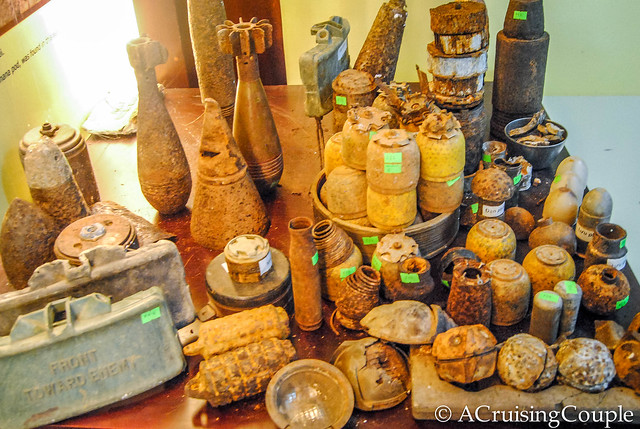


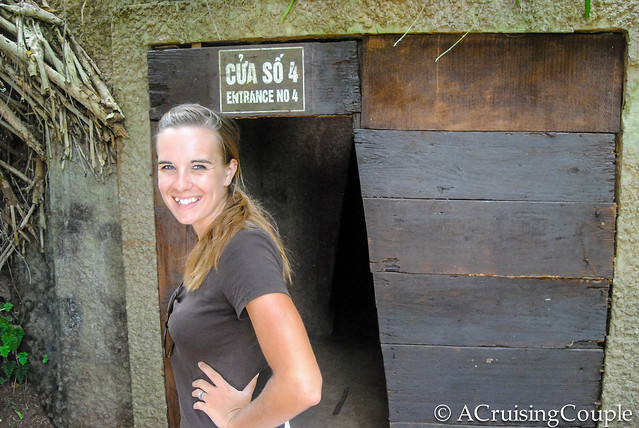
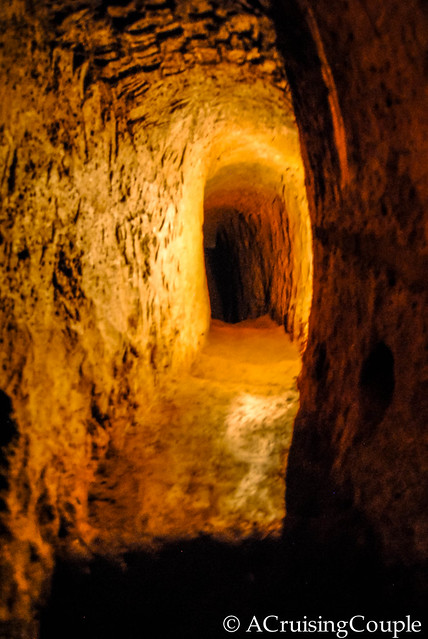
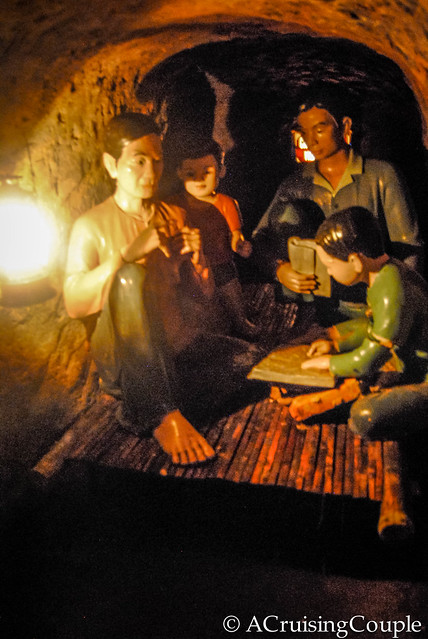

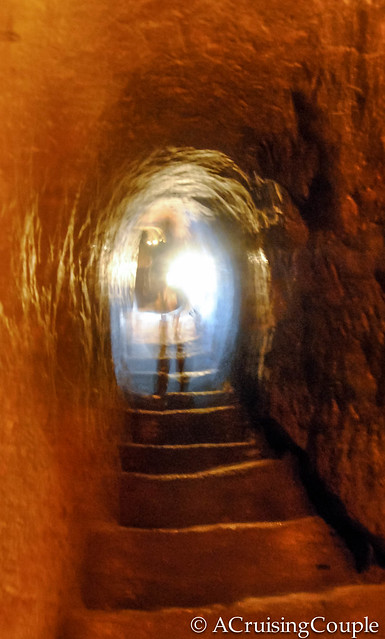





This is so interesting!! I had no idea there were still so many explosives there, that is really sad. Glad you guys got such a good tour!
Rika | Cubicle Throwdown recently posted…Vancouver Review: Hiking Lynn Canyon
It was a really awesome tour! We knew the problem existed but had no idea the extent of it. It’s sad that people are still being effected even after so many years.
Such an interesting tour to take guys. We went on ‘war’ tours before not in Vietnam though (we still have to explore it). They have always been very fascinating and helped us to know more about parts of history we didn’t know enough. I’d definitely do it myself, thanks for sharing, if we ever make it to Vietnam I’ll make sure I remember of Binh.
Franca recently posted…Visiting the Taipei Biennial and Fine Arts Museum
I hope you do get the chance to make it someday! Where was your tour?
I really enjoyed reading your account of the DMZ tour. We did a tour of the Chu Chu Tunnels but it didn’t provide a unique perspective that your tour guide gave you! Thanks for sharing!
Constance recently posted…Unique & Different: Art at CMP Block, Taichung
Glad you liked it! If we have the time we’d love to check out the Chu Chu tunnels as well. Thanks for stopping by :-)
We toured the Cu Chi Tunnels near HCMC and it was a very surreal experience. The pro-Communist/ anti-American propaganda was a little over the top and at times down right uncomfortable. Still, it’s amazing how they were able to survive underground for so long!
Heather recently posted…7 Things You Might Not Know About China
While we were walking through the Vinh Moc Tunnels we couldn’t imagine living that way for so long! We definitely noticed the propaganda as well (though to a certain extent we can kind of understand why.)
We did a DMZ tour as well and it was fascinating and eye opening. For me the Vinh Moch tunnels were fascinating. When we saw the movie room we were like what? movies? They didn’t have movies back then?!…and then remembered that the war was in the 60s. I found it more interesting than the Cu Chi Tunnels, although because they’re were used for fighting, more than just trying to live while a war was going on around them they were also really interesting, but very very overcrowded with tourists. The propaganda is so intense in Vietnam that it’s interesting that these at least speak for themselves quite a lot. Still loving reading all your posts!
Anna @ eatseedoblog recently posted…The beautiful village of St Guilhem Le Desert
The tunnels were definitely far more impressive than we expected! We were also very surprised that we were the only ones there at the time so we had the whole place to ourselves!
I came to Vinh moc tunnels to work as an on-site trainee guide. Unfortunately, I found it very difficult to learn about the Vietnam War, because this war is the combination of both civil war and patriotic war, although DMZ is my home town and I grew up there. Every information I had was a mixture. Then I met Mr Binh, a motorbike taxi driver ( this is often used in a disrespectful way). The first thing impressed me alot was his casual appearance. I wondered ” What kind of guide is that?” , I tried to follow him just to make fun of him. I laughed out loud when hearing his English accent, ’cause I thought My English was way better than him. Then I had to admit that my thinking was totally a big mistake. His knowlege of DMZ history was outstanding. The way he took care of customers made me feel ashamed. I felt small when I stood by him. He was guiding some young Australian, and they kept smiling during the whole tour. He advised me to speak to his guests to enhance my English, which made me feel more ashamed. He was so kind to me. Other following days, I went with him again, he taught me much about the history. After that I asked him about his private life, and found out that He had had a liver before, and all the money he made just made ends meet. In Vietnam, you have to get a tour guide certificate if you wannabe a guide, and the first condition is college degree. If not you will be get arrested and fined hard by the tourism department. Mr Binh is one of those who don’t have certificate.
One more thing about Mr Binh, unlike other guides who get tourists to shop for commission, he never does it. That’s why he gets much respect from many people.
Hey Dan & Casey,
Thanks much for taking time to drop in Mine Action Visitor Center and for the great article about in/around DMZ stuff and leftover bomb/mine situation in Quang Tri Province.
Well said, Khanh. Keep your history passion burning and surely you will be a young, energetic and dedicated “professional” tour guide !
Cheers,
Phú,
Thank you so much for taking the time to read our article and comment! We encourage all travelers to Vietnam to visit the Mine Action Visitor Center- It was an amazing and informative experience!
Hello
I have known Binh since the year 2000.He is one true friend of mine there,and have enjoyed a number of meals with his family during my visits.I’m a VN war junkie ,esp. the war at the DMZ.Binh and I have spent alot of time together.During my last visit he told me of his doctors concern for his health , my recent efforts to contact him by phone were in vain as his phone number is no longer active.If any one has any news on Binh I would like to hear it.Thx.
Hello again
Some sad news
After seeing the link to Tam’s Cafe I contacted them:
Hi Bruce,
Thank you for remembering Mr Binh. Unfortunately, he passed away half a year ago due to liver cancer.
I will pass the photo to his son.
Yours,
Tam
I attatched a photo from your website ,I replied with a link to your site.
You were all lucky to have the best guide of them all,I will miss him dearly.
I intend to help his wife as a I know how poor they were and she is as lovely as Binh was.
His daughter was the spitting image of him, a vivacious funny woman.
RIP Binh,Quang Tri wont be the same without you